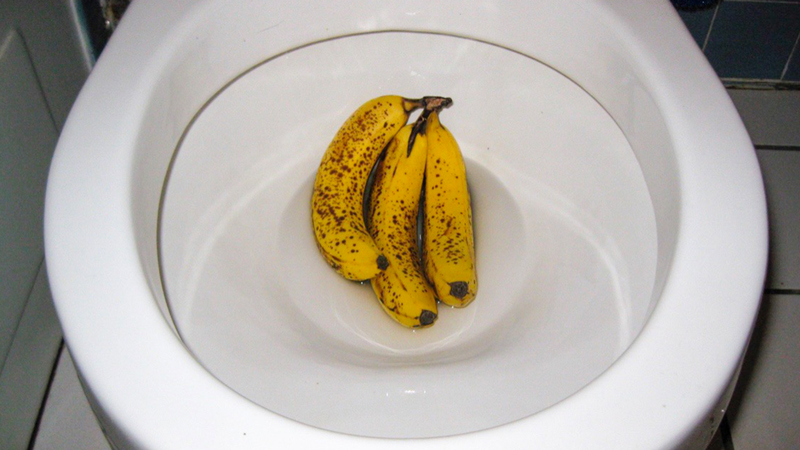Is it Feasible to Dispose of Food Waste in the Toilet?
Is it Feasible to Dispose of Food Waste in the Toilet?
Blog Article
The article down below relating to Think Twice Before Flushing Food Down Your Toilet is especially enlightening. Don't bypass it.

Introduction
Many people are frequently faced with the predicament of what to do with food waste, specifically when it concerns leftovers or scraps. One typical question that emerges is whether it's okay to flush food down the toilet. In this article, we'll look into the reasons why people may take into consideration flushing food, the consequences of doing so, and alternative methods for proper disposal.
Reasons individuals could take into consideration flushing food
Absence of awareness
Some individuals may not understand the possible injury brought on by flushing food down the commode. They may erroneously think that it's a safe technique.
Benefit
Flushing food down the commode might look like a fast and very easy solution to throwing away undesirable scraps, especially when there's no nearby trash can offered.
Laziness
In many cases, people might just select to flush food out of sheer laziness, without thinking about the repercussions of their actions.
Effects of flushing food down the toilet
Ecological impact
Food waste that ends up in rivers can add to pollution and injury water environments. In addition, the water utilized to purge food can stress water resources.
Plumbing problems
Flushing food can bring about clogged up pipelines and drains pipes, causing pricey plumbing fixings and hassles.
Kinds of food that need to not be purged
Fibrous foods
Foods with coarse appearances such as celery or corn husks can obtain tangled in pipelines and trigger blockages.
Starchy foods
Starchy foods like pasta and rice can take in water and swell, bring about obstructions in pipes.
Oils and fats
Greasy foods like bacon or food preparation oils need to never ever be flushed down the bathroom as they can solidify and cause blockages.
Proper disposal methods for food waste
Making use of a garbage disposal
For homes geared up with waste disposal unit, food scraps can be ground up and flushed through the pipes system. Nonetheless, not all foods appropriate for disposal in this way.
Recycling
Particular food packaging materials can be recycled, reducing waste and decreasing environmental influence.
Composting
Composting is a green method to throw away food waste. Organic products can be composted and made use of to improve soil for horticulture.
The significance of appropriate waste monitoring
Reducing ecological harm
Correct waste monitoring methods, such as composting and recycling, help decrease contamination and protect natural resources for future generations.
Shielding plumbing systems
By avoiding the method of flushing food down the commode, home owners can avoid expensive pipes repair work and keep the integrity of their plumbing systems.
Conclusion
In conclusion, while it may be appealing to purge food down the toilet for convenience, it is essential to understand the possible repercussions of this activity. By taking on appropriate waste administration practices and disposing of food waste properly, people can contribute to healthier plumbing systems and a cleaner setting for all.
FLUSH FOOD DOWN THE TOILET?
FLUSHING FOOD CAN CAUSE BLOCKED DRAINS IN YOUR HOME
All of the plumbing fixtures in your home are connected to the same sewer pipe outside of your home. This outdoor sewer pipe is responsible for transporting all the wastewater from your home to the Council sewer mains. Even small pieces of food that go down the kitchen sink can cause problems for your sewer. It should therefore be obvious that flushing larger bits of food, such as meat, risks a clog in either the toilet itself or the sewer pipes. Flushing greasy food is even more problematic because oil coagulates when it cools, coating the interior lining of your pipes.
THE TOILET IS NOT A BIN
Food isn’t the only thing that people shouldn’t be flushing down the toilet. People use the toilet to dispose of all kinds of things such as tampons, makeup wipes, dental floss, kitty litter and even underwear. Water goes to great lengths to educate residents about the high costs and stress placed on wastewater treatment systems simply from people flushing the wrong stuff down the toilet. It costs taxpayers millions of dollars each year, and homeowners thousands in blocked drain repairs.
FLUSHING FOOD IS A WASTE OF WATER
Flushing food is a waste of our most precious resource - water. In June this year Level 1 water restrictions were introduced to protect water supply from drought conditions. Much of New South Wales continues to be affected by prolonged drought with recent figures revealing up to 97 per cent of the state remains in drought. Depending on whether you have a single or dual flush toilet, every single flush uses between five and 11 litres of water. In the current climate this is a huge amount of water to be wasting on flushing food that should be placed in the bin (or better yet, the compost).
https://www.jabplumbingsolutions.com.au/blog/can-you-flush-food-down-the-toilet

I was made aware of that report about from an associate on a different domain. For those who appreciated our post kindly make sure you remember to pass it around. I love your readership.
Click Here Report this page